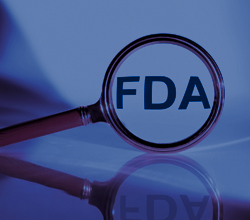
Job Hazard Analysis (JHA) & Control Strategies: Doing It Right
 Joe Keenan
Joe Keenan
 60 Mins
60 Mins
Product Id: 707030
A Job Safety Analysis (JSA) or Job Hazard Analysis (JHA) is a very effective way to help mitigate health and safety hazards in the workplace. A JSA/JHA is an important element to have in a comprehensive Safety and Health Management System.

Conducting Your 2026 Annual ACH Rules Compliance Audit - a Step-by-Step Guide
 Donna K Olheiser
Donna K Olheiser
 90 Mins
90 Mins
Product Id: 705082
The Nacha Operating Rules and Guidelines require that all participating depository financial institutions (ODFI & RDFI), Third Party Senders (TPS) and Third-Party Service Providers (TPSP) that provide ACH services to the RDFI or ODFI, conduct an annual ACH audit by December 31 of each year (Nacha Operating Rules, Article 1).

Troubleshooting Ethylene Oxide (EO) Processes
 Gerry O Dell
Gerry O Dell
 75 min
75 min
Product Id: 701679
Not every parameter in the EO sterilization process in critical for the determination of the product’s sterility assurance level (SAL). This presentation will outline the various parameters and what actions should be taken when they are not compliant to the process specification. These actions can be as simple as a rationale for release to as complicated as the need for the qualification of a new sterilization process. How to decide the actions to take will be addressed along with the reasons behind the decisions so that an accurate and complete justification of your decision can be made for both management and regulatory agencies. The rationales for both conventional and parametric release will be addressed.

Being Prepared for an Active Shooter Incident at Workplace
 Michael Aust
Michael Aust
 60 Mins
60 Mins
Product Id: 704652
This training program will take attendees through the actions to take when confronted with an active shooter and in assisting responding law enforcement officials. It will help recognize potential workplace violence indicators and describe actions to take to prevent and explore the General Duty Clause of the OSH Act.

EPA Tier II Reporting
 Joe Keenan
Joe Keenan
 60 Mins
60 Mins
Product Id: 705125
This training program will enumerate the requirements of the Emergency Planning and Community Right-to-Know Act (EPCRA) as it applies to your organization. It will also help attendees understand the threshold trigger for reporting a hazardous chemical on the Tier II forms and learn how to accurately calculate chemical mixtures as it applies to the Tier II forms. Further, attendees will learn to navigate the complexities of online Tier II reporting.

Best Practices of Writing SOPs
 Michael Esposito
Michael Esposito
 90 Mins
90 Mins
Product Id: 705614
Standard Operating Procedures (SOPs) are the basis for a large part of the day-to-day training that most pharmaceutical employees are required to perform. Still, it is not widely understood how the writing of a procedure can have a positive or negative impact on training. In this course you will learn the vital connection between the documentation and training spheres, and how to maximize this connection to improve the quality of both SOPs and training.

Holding Vendors Accountable through Robust Contracts & SLAs
 Carolyn Troiano
Carolyn Troiano
 90 Mins
90 Mins
Product Id: 707031
In the IT world, contracts and Service Level Agreements (SLAs) are often very standard, cookie-cutter agreements, and what I have found in my decades of consulting related to GxP systems, they are not scrutinized appropriately. This will likely be a large capital investment or expense to the company, and it is clear that the experiences of many in the Life Science industries have proven less than acceptable.

Excel Spreadsheets; Ensuring Data Integrity and 21 CFR Part 11 Compliance
 David Nettleton
David Nettleton
 75 Mins
75 Mins
Product Id: 701582
Learn how to use Microsoft Excel spreadsheets for GXP data to ensure compliance with 21 CFR Part 11 and reduce validation cost and time.

Supplier Management with the new Medical Device Regulation EU MDR 745/2017
 Frank Stein
Frank Stein
 60 Mins
60 Mins
Product Id: 706068
In this webinar, learn how to implement the changes required by the new regulation EU MDR 745/2017 in your current quality management system in a simple and quick way. The information in this course is vital to your passing the Quality Management Audit by your certification company or notified body.

Latest Changes to RoHS and REACH for 2026
 Kelly Eisenhardt
Kelly Eisenhardt
 60 Mins
60 Mins
Product Id: 706070
This 1-hour webinar will go into the specifics of the REACH and RoHS regulations and review the latest amendments and changes to both regulations for 2026. We will draw out key developments and key dates (if applicable) with particular emphasis on requirements for US firms.

Elements of an Effective Change Control System
 Michael Ferrante
Michael Ferrante
 60 Mins
60 Mins
Product Id: 703345
This webinar will focus on the regulatory and design requirements for an effective change control system in the pharmaceutical industry. Attendees will learn the role and importance of change control system in implementing an effective quality system.

Bacterial Endotoxin Test to Include the Latest on Low Endotoxin Recovery (LER)
 Barry A Friedman
Barry A Friedman
 90 Mins
90 Mins
Product Id: 705433
The webinar will review the current testing requirements as defined in the new, revised FDA guidance on Endotoxin and Pyrogen testing. It will further help attendees understand the issues surrounding the Low Endotoxin Recovery (LER) and its regulatory outcome.

How to identify and investigate Financial Crimes Red flags
 Justin Muscolino
Justin Muscolino
 60 Mins
60 Mins
Product Id: 707032
When it comes to AML, there are a lot of different components. For staff it's really important to not only know how the rules impact their role, but understanding the different types of red flags. In this webinar, we will discuss the background of AML and also the types of red flags you may encounter during your day to day roles.

Aseptic Processing Overview and Validation
 Kelly Thomas
Kelly Thomas
 90 Mins
90 Mins
Product Id: 706212
This course will provide an overview of the requirements for aseptic and bulk manufacturing operations, including facility design, contamination controls and acceptable personnel behaviors.

NEW Reclamation Process - Fed Gov't Payments
 Donna K Olheiser
Donna K Olheiser
 90 Mins
90 Mins
Product Id: 706928
Processing ACH Reclamations from the Federal Government can be challenging! Chapter 5 of the Green Book has been updated making it mandatory for Financial Institutions to respond to all reclamations must be submitted through the Automated Reclamation Processing System (ARPS) located in Treasury’s Pay.gov web portal (except for responses by DFAS and any Treasury-approved exceptions). The Nacha Operating Rules still apply when processing these payments but the Green Book outlines exceptions when handling DNEs (Death Notification Entries) and Federal Government Reclamations. A side-by-side comparison of Commercial vs. Government Reclamations will be included to know what the difference is and how to handle each one.

The Safety Responsibility of the HR Manager | HR and OSHA Laws
 Michael Aust
Michael Aust
 60 Mins
60 Mins
Product Id: 704831
This webinar will explain legislative roles and responsibilities of workplace parties and how HR plays a pertinent role in it. Instructor will discuss OSHA regulations and safety compliance practices and how to create safety culture at workplace. He will share practical tips and best practices for HR managers taking the responsibility of safety regulatory compliance.

Toxic Substance Control Act (TSCA) Awareness Training 101
 Joe Keenan
Joe Keenan
 90 mins
90 mins
Product Id: 706205
Attend this training to understand all the requirements of the Toxic Substance Control Act (TSCA), its revisions, and how to develop a written plan, TSCA Training Plan. Get answers to your TSCA questions.

The Importance of Packaging and Labeling in Pharmaceutical Product Development
 Michael Esposito
Michael Esposito
 60 Mins
60 Mins
Product Id: 706063
Packaging and labeling is often underestimated in the planning phases of pharmaceutical product development. This leads to unnecessary increases in cycle time, costly errors, and delays in product availability, or product recalls due to noncompliance. This webinar will help you succeed in pharmaceutical product launch by exploring its importance right from the conception of a product, its realization and distribution.

Data Integrity and Privacy: Compliance with 21 CFR Part 11, SaaS/Cloud, EU GDPR
 David Nettleton
David Nettleton
 90 Mins
90 Mins
Product Id: 701687
This 21 CFR Part 11 compliance training will guide you through the requirements of Part 11 and will also explain its 3 primary areas: SOPs, product features and validation (10 step risk based approach).

You have a BI Positive or Product Sterility Positive - Now What?
 Gerry O Dell
Gerry O Dell
 75 Mins
75 Mins
Product Id: 703288
This webinar explains what actions should be taken following an unexpected positive result in a sterility test on a biological indicator (BI) during performance qualification or routine testing. It also addresses the actions to take when a test of sterility demonstrates unexpected growth during validation or routine dose audits. The various items that should be investigated to determine the root cause and the follow up to the investigation will be covered.


























